20 Top SD-WAN Providers for 2020: The CP List Version 3
Did your company or key provider make our list?

Evolving customer demands and more emphasis on security are impacting the highly competitive and ever-changing field of SD-WAN providers.
Last May, our second “CP List” focused on SD-WAN with analysts, members of the Channel Partners Editorial Advisory Board and other industry experts. They shared their views on what it takes to succeed in SD-WAN. We’re back with an updated list and fresh perspectives on changes in this competitive technology during the past year.
SD-WAN Trends
Brian Washburn is an analyst with Omdia. He said two trends have emerged in the past year, as well as COVID-19’s impact on SD-WAN. The technology is becoming “more diverse and nuanced,” he said.
SD-WAN started off as a cost-saving play, then became a key part of complex business transformation efforts, he said.

Omdia’s Brian Washburn
“Now we’re seeing some efforts to bring SD-WAN back to basics through automated ordering and configuration, friendlier self-installation and automated support,” he said. “These are ways to bring down the cost of SD-WAN deployment. In that sense, SD-WAN is coming full circle.”
Another interesting trend is around SD-enabling existing customer premises equipment (CPE) gear, which is now fairly common among enterprises, Washburn said.
“These include, for example, upgraded Cisco ISR and Juniper SRX routers, and Fortinet and Palo Alto Networks firewalls,” he said. “Service providers might end up having to help enterprises resolve what to do if they have an enterprise-wide SD-WAN partner, a controller for their SD-enabled routers, another controller for their SD-enabled firewalls, and yet another controller for their WiFi/SD-LAN.”
COVID-19
Finally, due to the pandemic, enterprises are apt to have SD-WAN gateways supporting large numbers of concurrent remote access sessions at reasonable performance and cost, Washburn said.
“There are a few strategies and potential perils for this new requirement,” he said.
Bryan Reynolds is TBI‘s director of sales operations. He said more than ever, value-adds and support are critical to end customers.

TBI’s Bryan Reynolds
“Customers are very concerned with post-sales support as it pertains to their purchase, and leveraging post-sales resources like project managers, implementation specialists and self-service tools is becoming a popular sales approach when designing solutions,” he said. “Customers need solutions to work for their businesses and cannot afford to have expensive setbacks (construction costs, hardware refresh, etc.). There is a much greater demand on vendors as customers hold their feet to the fire. Those that rise to the occasion usually are more successful.”
Kelly Ratcliff is Clarify360’s CEO. He said organizations have move beyond initial thinking around MPLS cost saving and capex reduction as the primary driver to deploy an SD-WAN solution.

Clarify360’s Kelly Ratcliff
“As more and more applications move to the cloud, the corporate IT footprint has evolved,” he said. “Drivers like the increased need for application performance, network visibility and centralized management across branch locations have moved to the forefront as equally important areas of focus.”
The Impact of SASE
Matthew Toth is founder and president of Collaborative Communications Consulting (C3). He said SD-WAN’s definition hasn’t changed over the past year. But people talk about the technology as part of a wider product set called secure access service edge (SASE), he said.

C3’s Matthew Toth
“SASE includes SD-WAN, remote access, security and direct peering with major cloud providers,” he said. “Vendors should have less SD-WAN conversations and more SASE conversations.”
M&A
Vendor consolidation, partnerships and venture capital have changed the market, Toth said.
“Oracle bought Talari and Palo Alto Networks bought CloudGenix,” he said. “We expect more acquisitions to happen over the next couple of years. Partnerships have sprung up as well. Riverbed partnering with Versa to build out their SD-WAN capabilities is an example of this. Lastly, venture capital for some of the upstarts gave them a runway to compete with the big boys. Cato Networks, BigLeaf Networks and CloudGenix are examples of these.”
Based on feedback from analysts, experts and recent news reports, we’ve compiled a list, in alphabetical order, of 20 top SD-WAN providers that are making the most of the current competitive landscape and charting success. The list offers a mix of well-known providers as well as lesser-known companies that are making big strides in SD-WAN.
Aryaka
 Aryaka is among the leaders in SD-WAN, Reynolds said. Also, the 2019 Gartner Magic Quadrant for WAN Edge Infrastructure identifies Aryaka as a “visionary.”
Aryaka is among the leaders in SD-WAN, Reynolds said. Also, the 2019 Gartner Magic Quadrant for WAN Edge Infrastructure identifies Aryaka as a “visionary.”
In addition, Aryaka ranks sixth in the latest Vertical Systems Group SD-WAN rankings for year-end 2019. The providers each had 2% or more of installed and billable carrier managed SD-WAN customer sites in the United States.
AT&T
![]() Reynolds cited AT&T among the top SD-WAN providers. AT&T topped the latest Vertical Systems Group SD-WAN rankings for year-end 2019. AT&T has partnered with VeloCloud since 2016 for its platform.
Reynolds cited AT&T among the top SD-WAN providers. AT&T topped the latest Vertical Systems Group SD-WAN rankings for year-end 2019. AT&T has partnered with VeloCloud since 2016 for its platform.
“The WAN is playing a greater part in digital transformation decisions,” Ratcliff said. “Enterprises are turning to SaaS-based options instead of premises-based ones, such as enterprise resource planning (ERP) in the cloud, to run their businesses. Mission-critical applications like ERP need a solidly foundational vehicle in the form of a solidly architected SD-WAN network to support them.”
(list continues on next page)
Bigleaf Networks
 Reynolds cited Bigleaf Networks among top providers. Last fall, Bigleaf got $21 million in new Series B funding. The company said the money would go toward product innovation for its SD-WAN platform, and to expand its offering into new markets and channels.” It also said it would invest in its master agent relationships and spend more to develop its MSP channel.
Reynolds cited Bigleaf Networks among top providers. Last fall, Bigleaf got $21 million in new Series B funding. The company said the money would go toward product innovation for its SD-WAN platform, and to expand its offering into new markets and channels.” It also said it would invest in its master agent relationships and spend more to develop its MSP channel.
Cato Networks
 Toth cited Cato Networks as a top provider.
Toth cited Cato Networks as a top provider.
“We see Cato as the hungriest and most ambitious of the upstarts,” he said. “Cato built out a SASE platform before this was a commonly used acronym. Their solution scales well globally, was fully built in the cloud and is devoid of the mess of previous M&A. Organizations that want more than pure SD-WAN should shortlist Cato.”
(list continues on next page)
Cisco
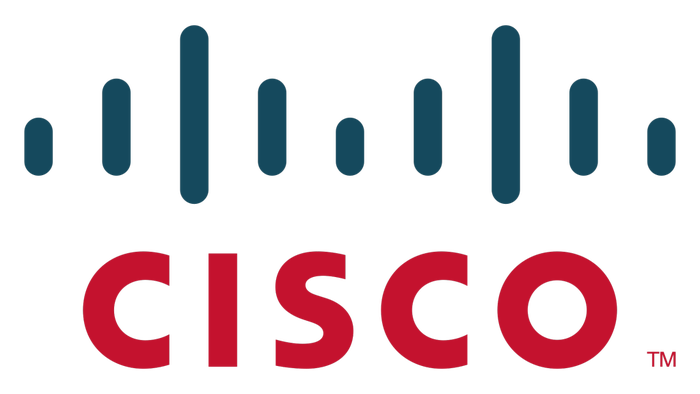 Washburn said Omdia is watching with interest the potential for Cisco SD-WAN Cloud Hub with Google Cloud. Cisco SD-WAN Cloud Hub with Google Cloud won’t be available until next year, but channel partners will play a key role in distribution and deployment. They can launch and support customers’ coronavirus-fueled SD-WAN and cloud deployments now with the capability in mind.
Washburn said Omdia is watching with interest the potential for Cisco SD-WAN Cloud Hub with Google Cloud. Cisco SD-WAN Cloud Hub with Google Cloud won’t be available until next year, but channel partners will play a key role in distribution and deployment. They can launch and support customers’ coronavirus-fueled SD-WAN and cloud deployments now with the capability in mind.
Citrix
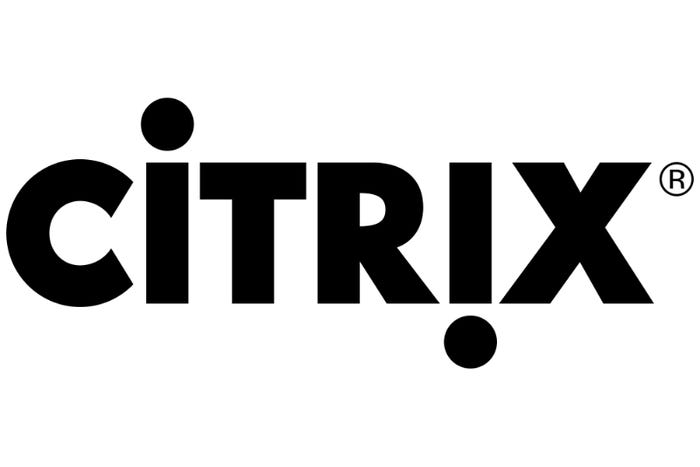 Toth cited Citrix among top providers. Citrix partnered with Check Point Software Technologies to roll out additional next-gen firewalls within Citrix SD-WAN. The offering will allow Citrix SD-WAN customers to automate and improve their networks, while protecting their networks from the latest cybersecurity threats.
Toth cited Citrix among top providers. Citrix partnered with Check Point Software Technologies to roll out additional next-gen firewalls within Citrix SD-WAN. The offering will allow Citrix SD-WAN customers to automate and improve their networks, while protecting their networks from the latest cybersecurity threats.
(list continues on next page)
CloudGenix/Palo Alto Networks
 CloudGenix has been making waves in SD-WAN, Reynolds said. But with Gartner’s introduction of SASE, Palo Alto Networks acquired CloudGenix, which will lead Palo Alto to build out and reinforce its SASE model, he said.
CloudGenix has been making waves in SD-WAN, Reynolds said. But with Gartner’s introduction of SASE, Palo Alto Networks acquired CloudGenix, which will lead Palo Alto to build out and reinforce its SASE model, he said.
Ecessa
 Ecessa is an interesting SD-WAN provider to watch as Communications Systems acquired the company earlier this month. The company designs and distributes SD-WAN solutions for businesses.
Ecessa is an interesting SD-WAN provider to watch as Communications Systems acquired the company earlier this month. The company designs and distributes SD-WAN solutions for businesses.
“Once fully integrated, Ecessa’s acquisition will provide greater sales opportunities to expand our services platform and offer cost synergies by complementing the existing network of products and services of JDL and Net2Edge,” said Roger Lacy, Communications Systems’ CEO.
(list continues on next page)
Expereo
 Reynolds cited Expereo as a formidable SD-WAN provider. Expereo provides managed network services, including global internet connectivity, SD-WAN and cloud acceleration services. It partners with 30% of Fortune 500 companies, and powers enterprise and government sites globally.
Reynolds cited Expereo as a formidable SD-WAN provider. Expereo provides managed network services, including global internet connectivity, SD-WAN and cloud acceleration services. It partners with 30% of Fortune 500 companies, and powers enterprise and government sites globally.
Fortinet
 Toth cited Fortinet as a top provider. According to Gartner’s March 2020 SD-WAN market share report, Fortinet had the third-highest revenue market share at 10.4% for enterprise WAN edge equipment globally.
Toth cited Fortinet as a top provider. According to Gartner’s March 2020 SD-WAN market share report, Fortinet had the third-highest revenue market share at 10.4% for enterprise WAN edge equipment globally.
Effective SD-WAN solutions include ease of deployment, flexibility with management, security and the ability to leverage multigig speeds, Reynolds said.
“[Security] is usually at the forefront of any conversation about a new technology,” he said. “Whether it can complement or replace customer security postures is to be determined, but security has to be in lockstep with all SD-WAN conversations.”
(list continues on next page)
GTT
 Reynolds cited GTT as a formidable SD-WAN provider. This month, GTT expanded its managed SD-WAN service offering in the Americas region by adding the Silver Peak Unity EdgeConnect SD-WAN edge platform. GTT was one of the first service providers to offer managed SD-WAN with a choice of vendor options. The new managed SD-WAN offering in the Americas region complements GTT’s existing offering with Silver Peak in Europe, which serves more than 100 clients.
Reynolds cited GTT as a formidable SD-WAN provider. This month, GTT expanded its managed SD-WAN service offering in the Americas region by adding the Silver Peak Unity EdgeConnect SD-WAN edge platform. GTT was one of the first service providers to offer managed SD-WAN with a choice of vendor options. The new managed SD-WAN offering in the Americas region complements GTT’s existing offering with Silver Peak in Europe, which serves more than 100 clients.
(list continues on next page)
Hughes Network Systems
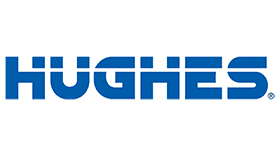 Hughes Network Systems ranks second on the latest Vertical Systems Group SD-WAN rankings for year-end 2019.
Hughes Network Systems ranks second on the latest Vertical Systems Group SD-WAN rankings for year-end 2019.
“Customers now consider secure and reliable access to SaaS and the cloud, the ability to scale, support for apps in real time, and a seamless service experience as table stakes,” Ratcliff said. “Moving forward, clients are going to expect added functionality in the form of enhanced integration via APIs with hyperscale cloud providers, advanced security features, automation and true mobile integration.”
(list continues on next page)
Masergy
 Reynolds cited Masergy as a formidable provider. Early this year, Masergy launched its Shadow IT Discovery solution. It scans and identifies all applications, providing clients visibility through the SD-WAN management portal.
Reynolds cited Masergy as a formidable provider. Early this year, Masergy launched its Shadow IT Discovery solution. It scans and identifies all applications, providing clients visibility through the SD-WAN management portal.
Vertical Systems Group lists Masergy in the challenge tier of its SD-WAN rankings for year-end 2019.
(list continues on next page)
Microsoft
 Washburn said Microsoft Azure Virtual WAN, which supports SD-WAN CPE from a range of vendors, is “one to watch.” Microsoft’s Azure VMware solution allows users to migrate their existing on-premises VMware applications to Azure without needing to redesign them. The Azure-built service gives customers the same VMware experience as in their private data centers, but in the Azure environment.
Washburn said Microsoft Azure Virtual WAN, which supports SD-WAN CPE from a range of vendors, is “one to watch.” Microsoft’s Azure VMware solution allows users to migrate their existing on-premises VMware applications to Azure without needing to redesign them. The Azure-built service gives customers the same VMware experience as in their private data centers, but in the Azure environment.
(list continues on next page)
Open Systems
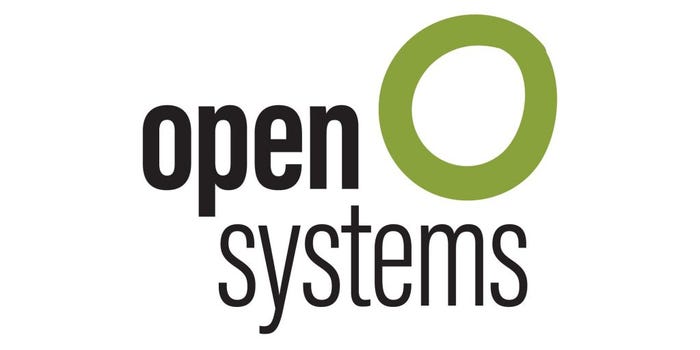 Toth cited Open Systems as a formidable player. The company’s cloud-delivered secure SD-WAN and managed detection and response (MDR) services unify security and networking capabilities. Organizations can connect their clouds, branches, applications and users anywhere in the world.
Toth cited Open Systems as a formidable player. The company’s cloud-delivered secure SD-WAN and managed detection and response (MDR) services unify security and networking capabilities. Organizations can connect their clouds, branches, applications and users anywhere in the world.
“SD-WAN is a technology that promises to simplify access to business-critical apps and allows the user, whether small business or enterprise-level, to have control of where the priorities lie,” Reynolds said. “On any level, ease of use is at the top of the list for most customers. Those providers that can create a good user experience, starting with the sale, will be able to differentiate themselves a lot faster than their competitors.”
(list continues on next page)
Silver Peak
 Thousands of globally distributed enterprises have deployed Silver Peak WAN solutions across 100 countries. In December, Silver Peak expanded its collaboration with Amazon Web Services (AWS) to allow integration between AWS Transit Gateway Network Manager and Silver Peak’s Unity EdgeConnect SD-WAN edge platform.
Thousands of globally distributed enterprises have deployed Silver Peak WAN solutions across 100 countries. In December, Silver Peak expanded its collaboration with Amazon Web Services (AWS) to allow integration between AWS Transit Gateway Network Manager and Silver Peak’s Unity EdgeConnect SD-WAN edge platform.
(list continues on next page)
Talari Networks/Oracle
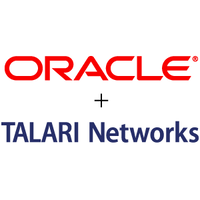 Oracle acquired Talari Networks in late 2018. The 2019 Gartner Magic Quadrant for WAN Edge Infrastructure lists Oracle/Talari as a niche player.
Oracle acquired Talari Networks in late 2018. The 2019 Gartner Magic Quadrant for WAN Edge Infrastructure lists Oracle/Talari as a niche player.
“As this market matures, we’re starting to see consolidation happen,” Ratcliff said. “Some players that had differentiated themselves like CloudGenix, recently acquired by Palo Alto, and Talari by Oracle, extend the capabilities of these firms acquiring them.”
(list continues on next page)
Tata Communications
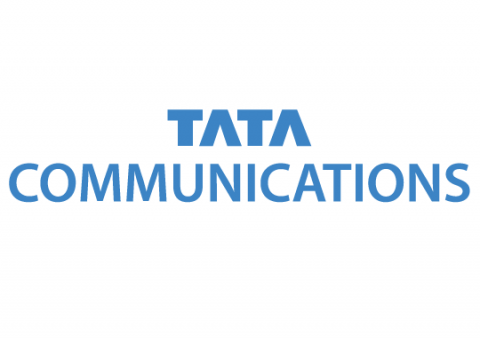 Tata Communications is cited as a leader in Gartner’s 2020 Magic Quadrant for Network Services, Global, for the seventh consecutive year. Through its network, cloud, mobility, IoT, collaboration and security services, Tata carries around 30% of the world’s internet routes. It also connects businesses to 60% of the world’s cloud giants and four out of five mobile subscribers.
Tata Communications is cited as a leader in Gartner’s 2020 Magic Quadrant for Network Services, Global, for the seventh consecutive year. Through its network, cloud, mobility, IoT, collaboration and security services, Tata carries around 30% of the world’s internet routes. It also connects businesses to 60% of the world’s cloud giants and four out of five mobile subscribers.
(list continues on next page)
Versa Networks
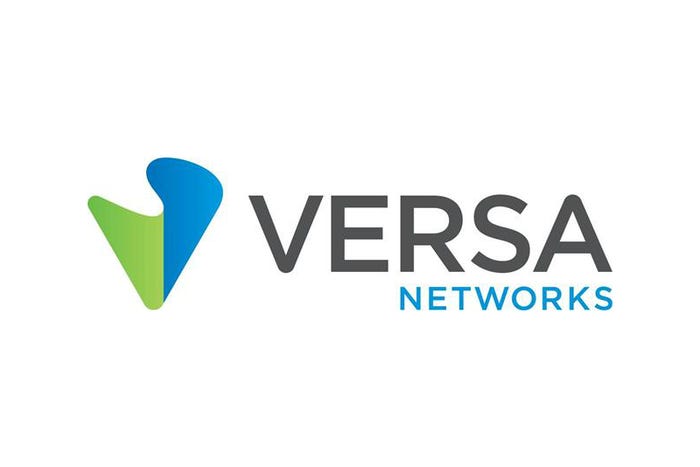 Toth cited Versa Networks as a top provider. For 2019, Versa reported more than 200,000 software licenses sold, more than 1,000 new global customers and more than 100 service provider partners.
Toth cited Versa Networks as a top provider. For 2019, Versa reported more than 200,000 software licenses sold, more than 1,000 new global customers and more than 100 service provider partners.
“Customer expectations are higher,” Toth said. “This isn’t a ‘let’s give it a try’ technology anymore. Customers expect a mature product and they’re receiving it.”
(list continues on next page)
VMware
 VMware is listed as a leader on the 2019 Gartner Magic Quadrant for WAN Edge Infrastructure. The company said it has more than 15,000 Virtual Cloud Network customers, including 89 of the Fortune 100 and eight of the top 10 telecommunication operators. More than 225,000 branch offices have deployed VMware’s SD-WAN.
VMware is listed as a leader on the 2019 Gartner Magic Quadrant for WAN Edge Infrastructure. The company said it has more than 15,000 Virtual Cloud Network customers, including 89 of the Fortune 100 and eight of the top 10 telecommunication operators. More than 225,000 branch offices have deployed VMware’s SD-WAN.
Read more about:
AgentsAbout the Author
You May Also Like


